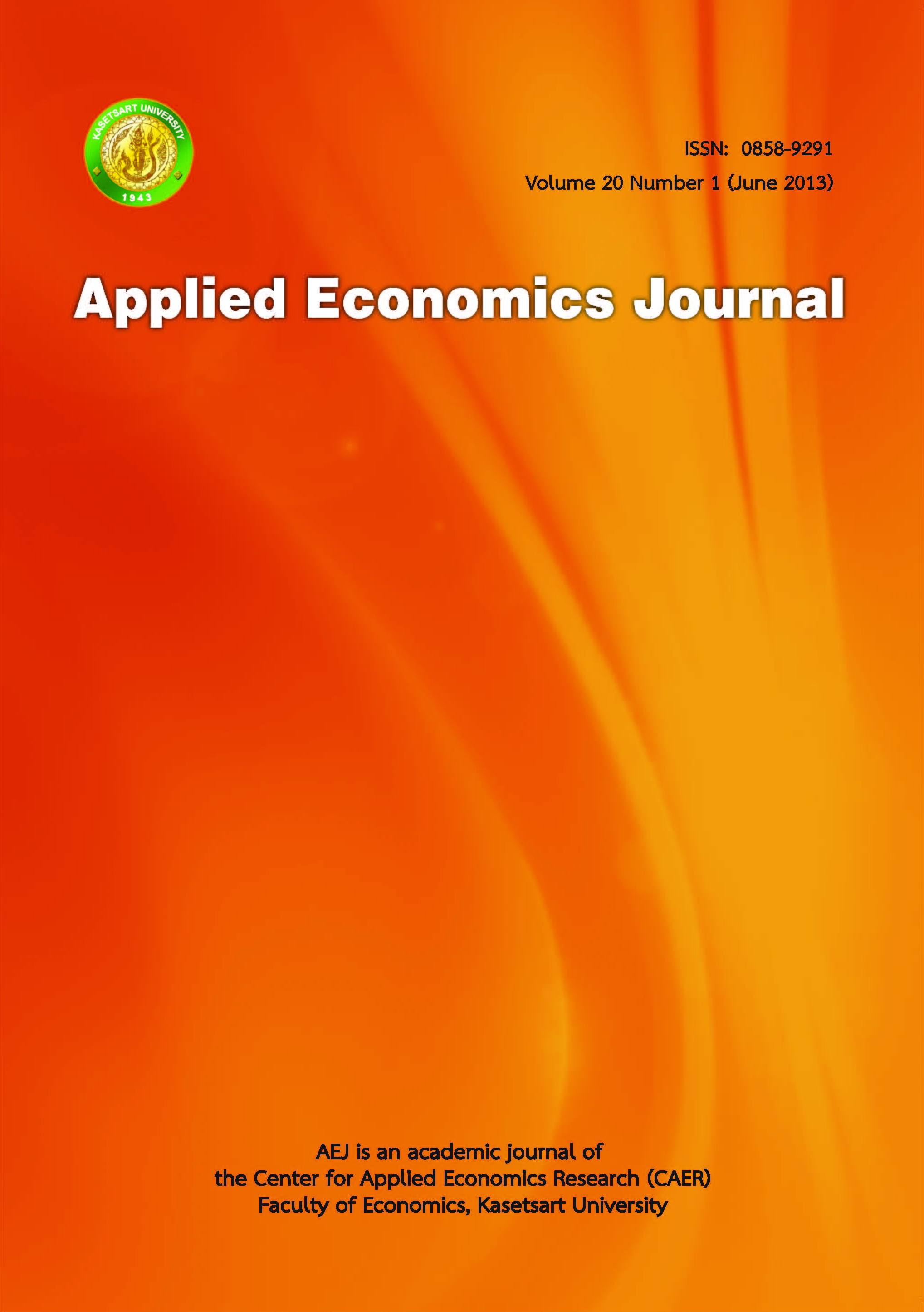พฤติกรรมการคืนสินค้าของผู้บริโภคในธุรกิจค้าปลีกสมัยใหม่
Main Article Content
Abstract
บทคัดย่อ
ร้านค้าปลีกสมัยใหม่ใช้นโยบายการคืนสินค้าเพื่อให้ลูกค้าเกิดความพึงพอใจ บทความนี้วิเคราะห์ถึงพฤติกรรมการคืนสินค้าของผู้บริโภคในเขตกรุงเทพมหานครและปริมณฑล โดยอาศัยแบบจำลองโลจิทแบบลำดับและใช้ข้อมูลจากแบบสอบถาม 400 ตัวอย่าง ผลการวิเคราะห์พบว่า ลูกค้าส่วนใหญ่มีความรู้ความเข้าใจไม่ถูกต้องในเงื่อนไขการคืนสินค้า เกือบสามในสี่ของกลุ่มตัวอย่างพบสินค้ามีปัญหาหรือสินค้าไม่เป็นที่พอใจ โดยมีสาเหตุจากสินค้ามีตำหนิหรือชำรุดเสียหาย ส่วนใหญ่เป็นสินค้ากลุ่มเครื่องใช้ไฟฟ้าและพบที่ไฮเปอร์มาร์เก็ต ส่วนใหญ่ตัดสินใจเปลี่ยน/คืนสินค้าภายใน 7 วันนับจากวันที่ซื้อ การเปลี่ยน/คืนมักใช้เวลาไม่เกินครั้งละ 30 นาที และเห็นว่าขั้นตอนการเปลี่ยน/คืนยุ่งยาก ส่วนใหญ่เลือกที่จะเปลี่ยนเป็นสินค้าใหม่และไม่ซื้อสินค้าอื่นเพิ่มเติม ปัจจัยที่ส่งผลไปในทิศทางเดียวกันต่ออัตราส่วนความน่าจะเป็นในการเปลี่ยน/คืนสินค้า ได้แก่ 1) ความถี่ในการเดินทางมาร้านค้าปลีกสมัยใหม่ 2) ความรู้ความเข้าใจเกี่ยวกับนโยบายการคืนสินค้า 3) การรับรู้ข้อมูลเกี่ยวกับนโยบายการคืนสินค้า ก่อนตัดสินใจซื้อสินค้า 4) ความถี่ในการพบสินค้าที่มีปัญหาหรือสินค้าไม่เป็นที่พอใจ และ 5) ค่าใช้จ่ายเดินทางไปเปลี่ยน/คืนสินค้า รัฐควรออกข้อบังคับให้ร้านค้าแจ้งข้อมูลนโยบายการคืนสินค้าแก่ผู้บริโภคอย่างถูกต้องและชัดเจน ร้านค้าควรจัดหาสินค้าจากผู้ผลิตที่น่าเชื่อถือเพื่อลดปัญหาสินค้าชำรุด และควรปรับปรุงระบบจัดการโลจิสติกส์และการพัฒนาฐานข้อมูลการเปลี่ยน/คืนสินค้า
คำสำคัญ : พฤติกรรมการคืนสินค้า, นโยบายการคืนสินค้า, ร้านค้าปลีกสมัยใหม่
Abstract
Modern retailers use return policy to create customer satisfaction. This paper analyzes thereturn behavior of consumers in Bangkok metropolis which includes surrounding urbanized provinces. The ordered logit model and questionnaire survey data from 400 samples were used. The analysis reveals that most of the respondents had incorrect understanding of thereturn policy conditions. Almost three-fourths of the consumers received defective productsor were dissatisfied with product quality; these were mostly found in electrical appliances from hypermarkets. The consumers decided to exchange or return the products within 7 days after purchase. The exchange/return procedure usually takes 30 minutes or less but most consumers found the exchange/return process difficult. Most people chose to exchange for new items without making additional purchase. The analysis shows that the following factors had a positive effect on the probability of product exchange/return: 1) travel frequency to modern retailers, 2) knowledge of the return policy, 3) perceived information onthe return policy prior to the purchase, 4) frequency of experiencing defective or unsatisfactoryproducts, and 5) travel expenses incurred in exchanging/returning products. Thegovernment should regulate retailers to provide correct and clear return policy information.The retailers should procure from reliable suppliers to reduce the incidence of defective products. The retailers should develop a better logistics and improve on the product return database.
Keywords : product return behavior, return policy, modern retailerJEL
Classification : C25, D12, M31
Article Details
The paper is published under CC BY-NC-ND, in which the article is freely downloaded and shared in its original form non-commercially and its citation details are identified.

